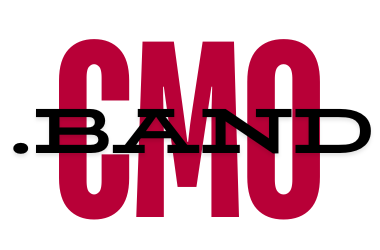Mastering the Math: A Step-by-Step Guide to Calculating Customer Acquisition Cost
As a digital marketing expert, one of the most critical metrics that I always emphasize to businesses, regardless of their size or industry, is the Customer Acquisition Cost (CAC). Understanding and optimizing your CAC is not just about reducing costs; it’s about maximizing your marketing efforts and strategically driving growth. Today, I’ll walk you through a comprehensive guide to calculating your CAC and how this metric can transform your marketing strategy.
What is Customer Acquisition Cost?
Customer Acquisition Cost is the total cost of acquiring a new customer. This includes all the marketing and advertising expenses over a specific period divided by the number of customers acquired during that same period. It sounds straightforward, but the devil is in the details—or in this case, in the calculation.
Why is CAC Important?
Knowing your CAC helps you determine the effectiveness of your marketing strategies. It influences many crucial business decisions regarding budget allocation, marketing channel optimization, and forecasting. A lower CAC indicates a more cost-effective strategy for acquiring new customers, which can lead to higher profitability.
Step-by-Step Guide to Calculating CAC
Step 1: Define the Time Frame
Choose a specific period for your analysis. This could be a quarter, a year, or any duration that suits your business cycle.
Step 2: Aggregate the Costs
Collect all costs associated with marketing and advertising. This includes:
- Direct marketing and advertising expenses (e.g., PPC campaigns, social media ads)
- Salaries of marketing team members
- Overheads allocated to the marketing department
- Costs of marketing tools and software
- Content production costs (e.g., videos, blogs, whitepapers)
- Agency fees
Ensure that all costs are accounted for to avoid underestimating your CAC.
Step 3: Identify New Customers
Determine how many new customers were acquired during the chosen period. Ensure that these are genuinely new customers—repeat purchases do not count.
Step 4: Calculate CAC
Now, divide the total costs from Step 2 by the number of new customers from Step 3. The formula looks like this:
[ \text{CAC} = \frac{\text{Total Marketing Costs}}{\text{Number of New Customers}} ]
Example of CAC Calculation
Let’s say your company spent $100,000 on marketing in Q1. During this period, you acquired 500 new customers.
[ \text{CAC} = \frac{\$100,000}{500} = \$200 ]
This means that for each new customer, your company spent $200.
Leveraging CAC for Better Marketing Decisions
1. Benchmarking and Goals Setting
Compare your CAC with industry standards to see where you stand. Set realistic CAC reduction goals and strategize on how to achieve them through more efficient marketing tactics or cheaper channels.
2. Budget Allocation
Understanding your CAC can help you allocate your marketing budget more effectively. Invest more in channels that have a lower CAC and reconsider or optimize those with a higher CAC.
3. Performance Monitoring
Regularly monitor your CAC to ensure that your marketing efficiency is improving. This can help you catch increases in CAC early and adjust your strategies accordingly.
4. Forecasting and Scaling
Use historical CAC data to forecast future marketing needs and budget requirements. Knowing your CAC can also help you decide when and how to scale your marketing efforts without sacrificing profitability.
Common Pitfalls in CAC Calculation
1. Not Including All Costs
Many businesses make the mistake of excluding indirect costs like employee salaries or overhead costs. This can lead to a misleadingly low CAC.
2. Overlooking Customer Segmentation
Different channels and campaigns might bring in customers with varying acquisition costs. Analyze CAC by segments to pinpoint which areas yield the best return on investment.
3. Ignoring Customer Lifetime Value (CLV)
CAC should not be viewed in isolation. Compare it with the Lifetime Value of a Customer (CLV) to ensure sustainable business growth. A healthy ratio of CLV to CAC is generally considered to be 3:1.
Mastering the math behind Customer Acquisition Cost is essential for any marketer looking to enhance their strategy and impact the bottom line positively. By understanding and applying the principles of CAC calculation, businesses can make informed decisions that not only save costs but also drive substantial growth. Remember, the goal is not just to attract customers but to do so in a cost-effective manner that aligns with your overall business objectives.

A seasoned digital marketing strategist with over 8 years of experience across various areas of digital marketing, including SEO, SMM, PPC, content marketing, and email marketing. Specializes in transforming B2B, B2C, e-commerce, and SaaS businesses by creating effective go-to-market strategies and building thriving digital ecosystems. Known for a data-driven approach to optimizing campaigns and maximizing results.
“If your business is looking to scale or in need of a fresh perspective, feel free to contact”.





